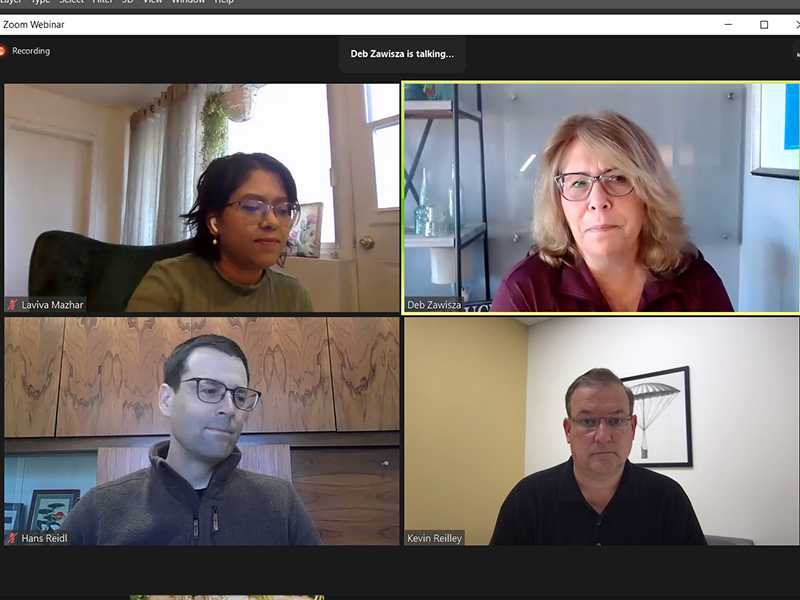
The ‘low hanging fruit’ for claims innovation
April 26, 2021 by Greg Meckbach

Print this page Share
Collecting high-resolution images, making it easy to report a loss, and integrating the service providers into the claims process are claims innovations carriers need to bring in if they are not already, InsurTech North speakers suggested last week.
“Make it very easy to report a claim. That’s sort of table stakes,” said Kevin Reilley, CEO of Atlanta-based software vendor Westhill Global, during Claims, The 800 Pound Gorilla – Ripe for Tech, a panel discussion at MSA Research’s InsurTech North virtual conference.
“If you can buy coverage quickly, you don’t expect really long claims processes,” said Deb Zawisza, vice president of research and consulting at Novarica.
Moderator Laviva Mazhar, Montreal-based Investment Associate with Luge Capital, asked how carriers can use claims to differentiate themselves.
If the carrier is giving the claimant updates automatically so the claimant knows what step is next and they know they are being taken care of, the claimant would tend to perceive that their carrier is on top of the claim, suggested Reilley.
“When someone [has suffered a loss] they are under stress. They just really want to get their lives back to normal, so having a digitally-anchored experience to get the repairs done for the homeowner is really important.”
Also on the panel was Hans Reidl, senior vice president of claims at Economical Insurance. In modernizing its claims process, one of the insurer’s areas of focus is its supply chain.
“I find insurance interesting, in that in other industries, your customers never meet your suppliers. But in insurance, we actually introduce the two. So, we recommend an auto shop or a medical clinic or a property contractor. And so the supply chain is important,” said Reidl.
The supply chain — such as collision repair centres and medical clinics — is important in controlling the carrier’s cost and ensuring the claimant has a good experience, he added.
“If you recommend a supplier that does not do a good job, it is going to reflect poorly on the carrier. So we wanted to get our heads around who we wanted to partner with in the long run before we move into a more digital journey,” Reidl said. “Because I think integration of the customer, the carrier and the supplier is going to be critical to producing kind of a seamless experience.”
When customers are buying insurance digitally, they expect to have a digital experience in other interactions with their insurance provider, suggested Zawisza.
“For insurers, I think that means really re-thinking the claims process, which, historically, has been very human-based, very manual, very paper-oriented,” said Zawisza, a former senior vice president of claims and risk control at The Travelers Companies Inc.
“When you have a digital buying process, it’s pretty transparent — what you are getting, how much it is costing. And from a claims standpoint, ensuring that there is information that’s available, that it’s real-time, that customers aren’t waiting on phone calls and really being able to understand where they are in that process, digitally, is really important.”
Mazhar asked panellists for example of some of the low-hanging fruits to innovate quickly in property claims. Carriers could use artificial intelligence to analyze high-resolution images of property damage, said Reilley.
But until recently, images were not good enough because the pixels were not dense enough.
“You could not really derive enough data, but everything is becoming so advanced now on the hardware side — particularly on the phones — you are going to see unbelievable solutions coming very soon for interior restoration as well as just identifying damage and scope,” said Reilley.
Have your say: